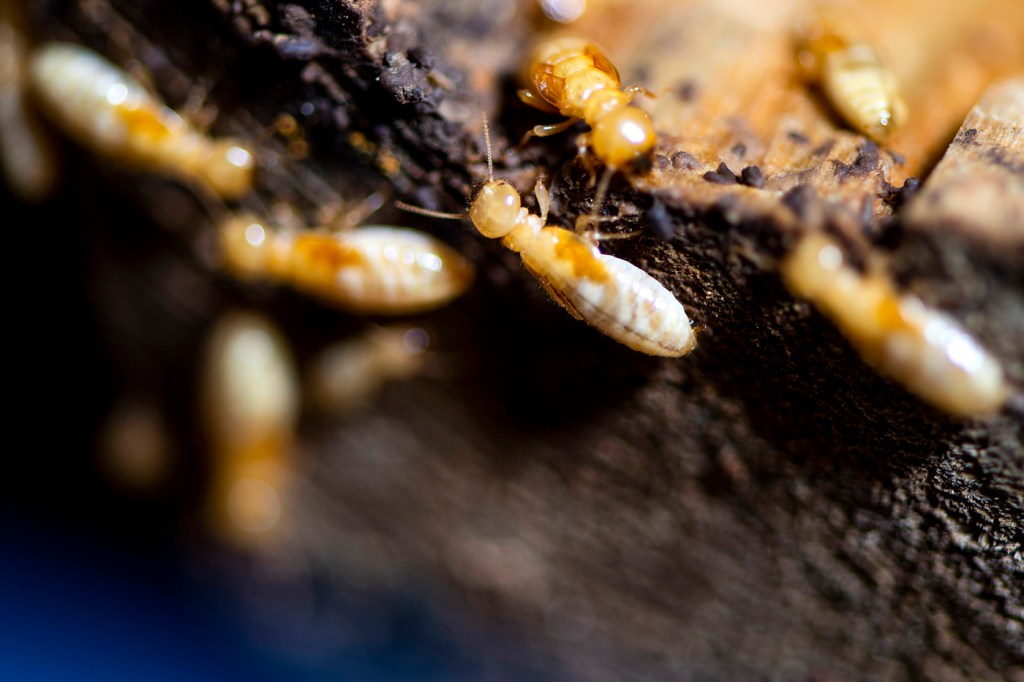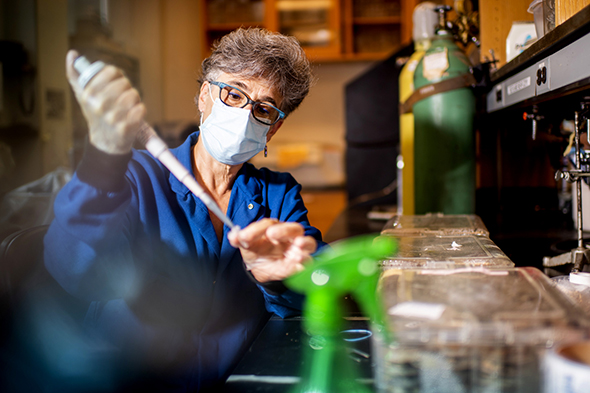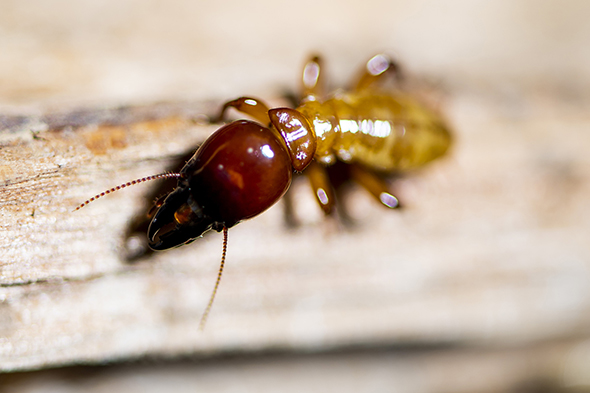For ideas about fighting pandemics, look to termites and ants

What if you could vaccinate a loved one by kissing them? Well, then you might be an insect.
Ants swap spit that contains disease-fighting compounds, so a few members of a colony can essentially immunize the rest mouth-to-mouth, says Rebeca Rosengaus, an associate professor and behavioral ecologist at Northeastern.
Termites sometimes do something similar, but their pathogen-battling material comes out the other end. Other times, they do a little dance.
Humans might take a page out of the bugs’ book, Rosengaus says.
“We’re not trying to say that humans behave like termites and termites behave like humans,” she says. “But we can use them as a model to say, millions and millions of years of natural selection have produced these solutions to the problem of how not to get infected. There’s a lot that we could probably learn from them.”
Rosengaus has been studying the disease-fighting capabilities of social insects (like ants and termites) for three decades. But she isn’t just trying to figure out how the bugs protect their colonies from being wiped out. Rosengaus’ research delves into questions about the origins of social behavior. Her hypothesis is that the benefit of sharing defenses against pathogens has driven the evolution of tightly-knit insect colonies. In other words, each individual insect gets by best with a little help from its colony-mates.




This isn’t just because of the spit-swapping that ants do or the, ahem, fecal donations (which Rosengaus calls “immune goodies”) shared between individual termites. Social insects deploy many different disease-fighting techniques to eradicate harmful bacteria, fungi, or other pathogens from their communities.
When a termite or ant returns to its colony with a harmful fungus or microbe in tow, the other insects in the colony will lick and groom it to use compounds in their saliva or digestive structures to kill or dispose of the pathogen before it can spread to the rest of the nest.
An infected termite will also shake and twitch to repel its relatives so as not to pass any disease to them in a sort of quarantine dance. “That tells others, ‘there’s a lot of pathogen here, don’t come over,’” Rosengaus says.
That antifungal fecal matter also come in handy, as that material can cover and kill pathogens.
“They don’t use only one thing, they use multiple ways all at the same time or sequentially in order to cope with pathogenic risks,” Rosengaus says. And this multi-pronged approach, she says, is not unlike humans deploying masks, physical distancing, sanitation measures, hygiene, quarantining and ultimately vaccination as tools that work together in the fight against COVID-19.
While humans have had to learn how to do these things, the termites that Rosengaus studies seem to be born knowing when these behaviors are necessary.
“Whether the colony is old, whether the colony is young, they seem to do it anyway. So I think that this is more of an innate behavior,” Rosengaus says. “They are born and they already have a wired behavioral response that if they perceive the pathogen, they will start grooming one another, they will start shaking” and so on.
Also hardwired into ants is a response to chip-in wherever an individual is needed during a crisis. Ants are specialized for different jobs: younger ants tend to be the ones that take care of the brood or the queen inside of the nest, while older ants go out and forage for food. But if the nurses are removed from a colony, the foragers realize that the job inside the nest isn’t getting done, and will revert back to that role.
“They’re not little robots,” Rosengaus says. “They’re actually perceiving and sensing their environment around them. And as they’re perceiving their environment, they realize this job is not getting done.”
In light of the renewed global consciousness about public health risks, and an existential concern about how we could handle the next looming pandemic or epidemic better as a society than we tackled COVID-19, Rosengaus says, experts should look beyond the obvious sources of human innovation to nature.
“It’s important that we think outside the box,” she says. “We could learn something from how nature came up with the solutions in other organisms. It doesn’t have to be social insects. It can be, I don’t know, zebras, wildebeest, anything that lives in a group and is moving around should be a good model to try to understand what are some of the mechanisms in order to cope with disease. It’s just that insects are easy to manipulate in the lab.”
For media inquiries, please contact Marirose Sartoretto at m.sartoretto@northeastern.edu or 617-373-5718.





